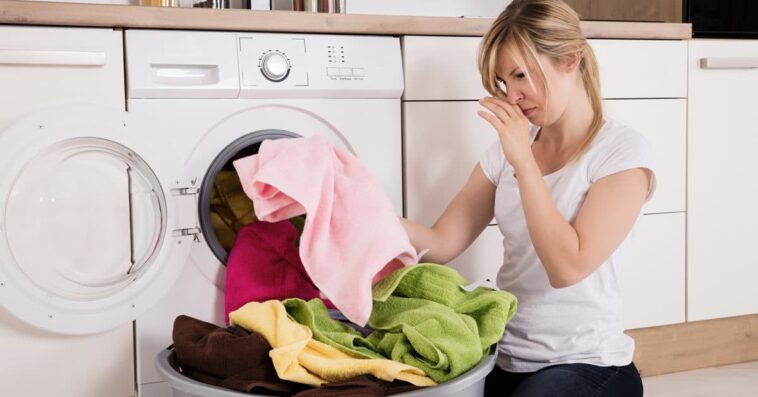The washing machine is not a cheap appliance, so we want to make sure it lasts for a long time. This is why the question of cleaning it is so important! In addition, accumulated dirt and mold can leave bad odors in your appliance and on clothes. So, here are tips for cleaning your washing machine without damaging it and without breaking the bank.
Why is it important to clean your washing machine properly?
A dirty washing machine can become a breeding ground for bacteria, mold and fungi. This can lead to unpleasant odors on laundry and potentially health problems, especially for allergic and fragile people. Additionally, a dirty washing machine can become less efficient in washing clothes. Residue from detergent or fabric softener, as well as scale and dirt, can be transferred to clothes, sheets and towels during washing, which can affect the cleanliness and softness of the fabric over time. By cleaning your household appliance regularly, you help preserve the quality of your laundry.
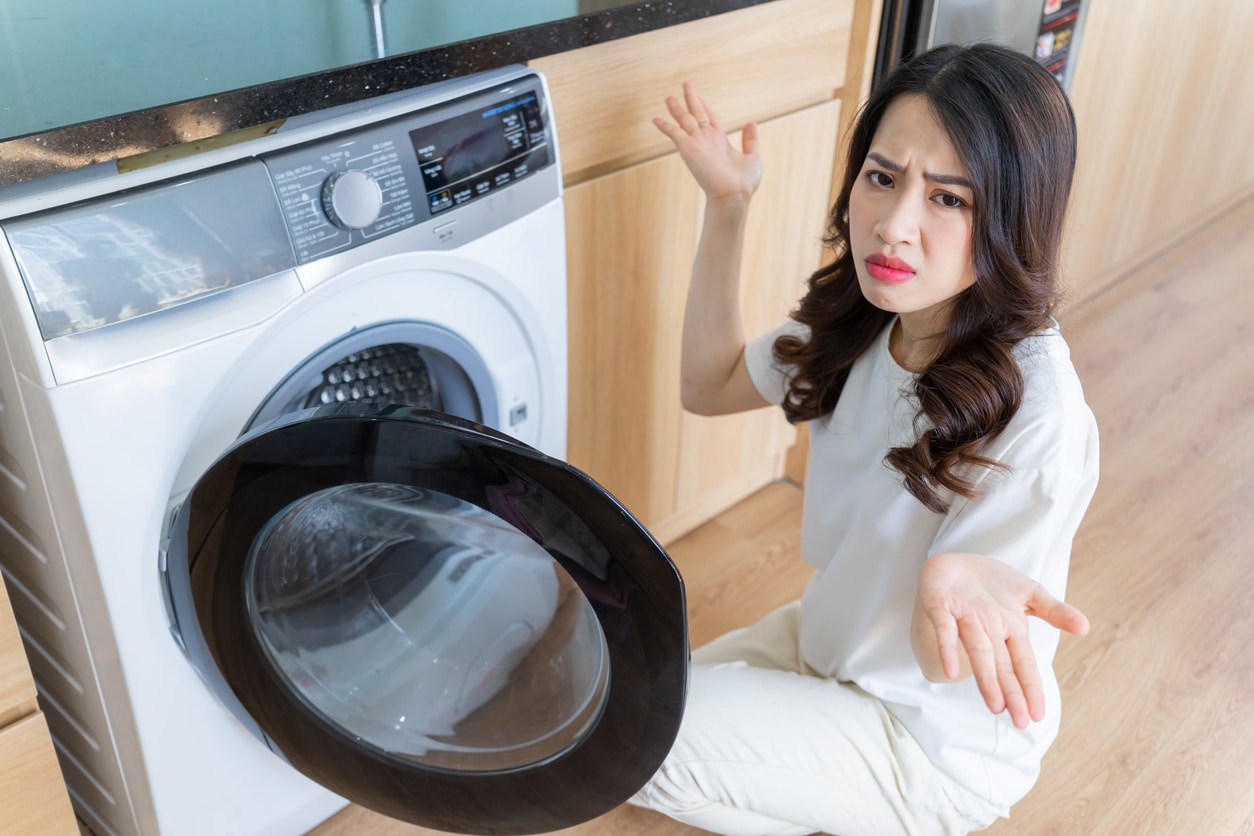
It is also essential for its proper functioning in the long term. Detergent, dirt and limescale residues can in fact accumulate in the seals, filters and internal parts of the machine, which can hinder its optimal functioning. Accumulation of dirt and residue can also cause premature wear of components of your washer, which may require costly repairs, parts changes or even replacing the machine sooner than expected in the event of an irreversible breakdown.
Finally, a clean washing machine works more efficiently, which can result in lower energy consumption. In the event of clogging, it may instead require more energy to heat the water and run the wash cycles.
1) Some basic maintenance concepts
The most essential advice against odors and mold is to systematically leave the door open after cleaning. This will allow moisture to escape after each wash. Along the way, you can wipe the joints with a dry cloth to avoid stagnant water. Also, in addition to not overloading the machine, do not put no more detergent or fabric softener than necessary. This will not clean your clothes any better and product residue will clog the machine. Finally, every month, do an empty machine wash and without product or just white vinegar at 90°C to fight bacteria and residue. Sometimes the machines even include a program to clean the dirt from the washing machine.
2) Against odors and to clean the washing machine

No need for bleach: natural tips are once again the best! To eliminate odors (especially related to mold), try this: put in the machine a damp washcloth soaked in 10 to 15 drops of organic tea tree essential oil. Also fall for the marriage of white vinegar and the machine. In addition to replacing the softener brilliantly (without leaving an acidic odor), it allows you to save on unfriendly descaling products. To avoid spoiling anything, it will also destroy bacteria and traces of detergent to clean the washing machine perfectly. Twice a yearrun a short empty program at 90°C with 10 cl of white vinegar as a detergent guide and one liter directly in the drum.
3) To find laundry tubs and a seal like new
Fortunately, the bin is usually easy to disassemble and maintain. If a simple rinse with warm water isn’t enough, scrub gently with an old toothbrush. Then dry everything carefully to prevent the appearance of mold. If the bins empty poorly or have residue, this may mean that the water pressure is poor (open the supply tap further) or that limestone blocks the water supply.
As for the joint, start by removing all the dirt from it. Then dry the area with a dry cloth. If necessary, you can clean it more thoroughly with a toothbrush and Marseille soap (or dishwashing detergent). After cleaning, rinse it and dry it carefully.
4) Anti-limescale: a useful investment or not?
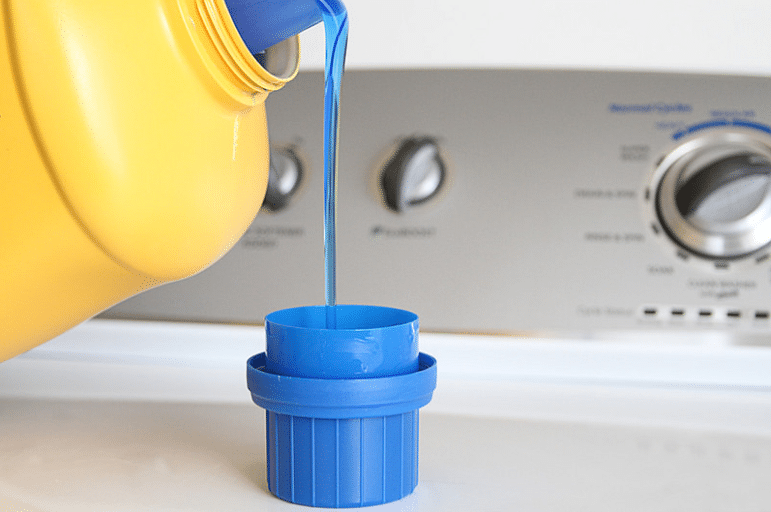
It all depends on the hardness of the water. However, this product will almost useless if you use liquid detergent ! For washing powder, it’s a little more complicated… Here, we strongly advise you to find out at the town hall, on your water bill or on the internet about the hardness of the water (or its “hydrotimetric title”) . If the water is soft, it will be of no use and it will be of little use on water of average hardness. On the other hand, it will be essential on hard water! In all cases, we advise you to reserve the powder for very light laundry. Furthermore, favor washing at low temperatures (30 and 40°C) which wash very well and will be more economical than a short cycle.
5) Wash the washing machine drain hose
This interview must be carried out once or twice a year. And this is important, because it gets clogged and deposits cause a bad odor on the laundry and in the appliance. Furthermore, this is an opportunity to check whether it and the seals are in good condition and whether tightening or replacement is necessary! Here, start with the filter, referring to the device’s instructions for use. Next, rinse the pipe thoroughly and run a cloth soaked in white vinegar through it. Finally, take the time to dry everything well with a clean, dry cloth or hairdryer!
6) Last step and not least to clean your washing machine: take care of the filter
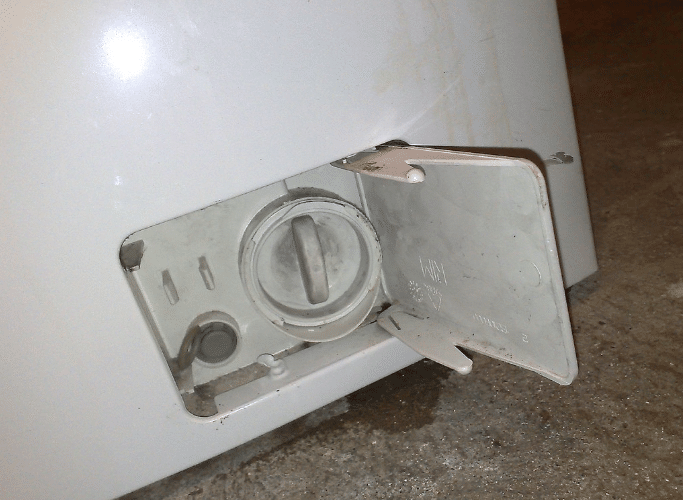
Typically, it is hidden behind a gate or plinth at the bottom of the device. Bring “professional” equipment for emptying: a tray to collect the water and a mop! Then remove the filter without ever forcing it so as not to damage it and prevent water leaks. It will also be necessary to put it back at the end for the same reason. Here, remember to collect all the little things that have no place there: tissues, baby socks, hair, objects forgotten in pockets, etc. Then rinse the filter with warm water and dry it before putting it back. Repeat this interview regularly.
And here are all the tips for cleaning your washing machine easily and economically. Also discover how to descale your washing machine perfectly!
How to keep a machine clean and functional over time?
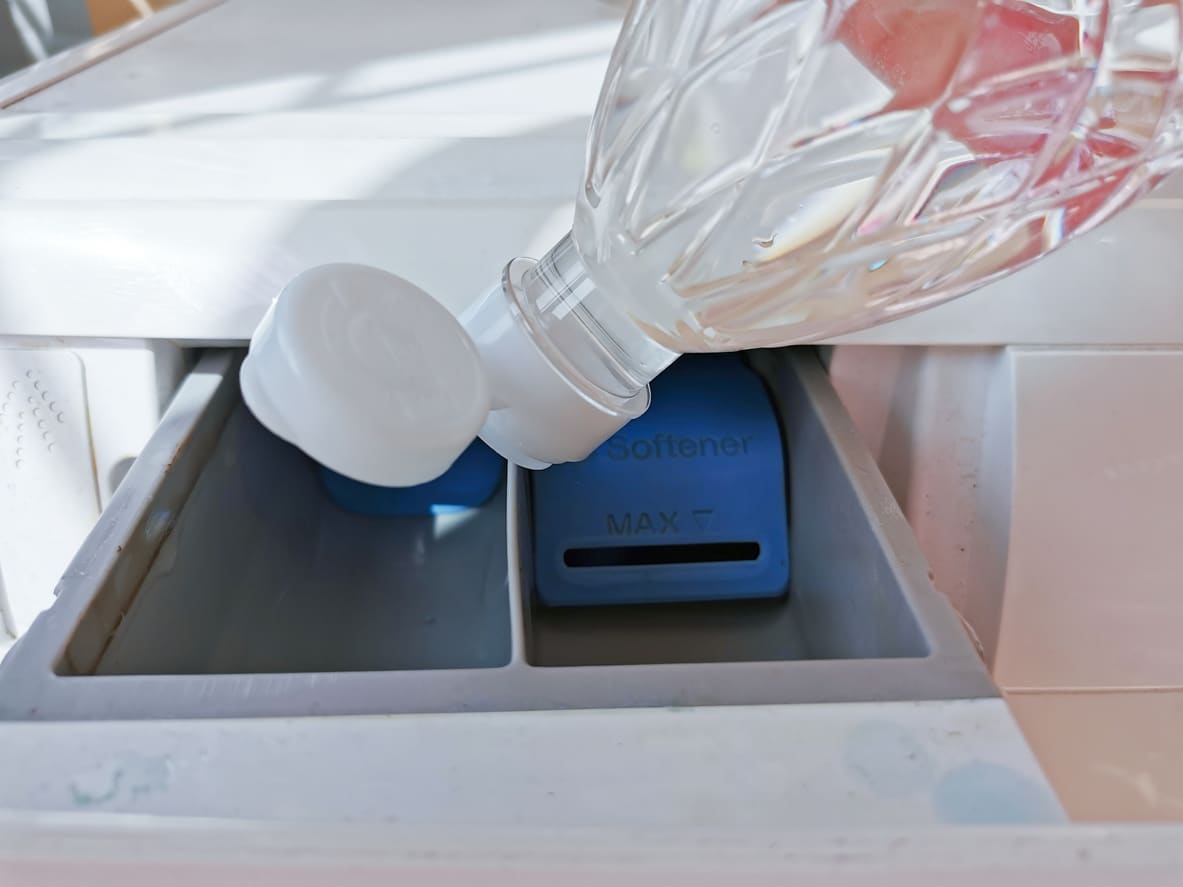
First of all, use the right type and amount of detergent. Use only detergents designed specifically for washing machines and soaps without palm oil or glycerin in your homemade laundry detergents. Whether you use commercially available powder or liquid detergent, always follow the manufacturer’s instructions for the quantity depending on the laundry load and water hardness. Same thing for fabric softener. Always avoid using too much detergentas this may result in fatty deposits which clog the appliance and make the laundry rough.
Also try to maintain the machine regularly. If the water is very hard, regularly use white vinegar in a machine running empty on a hot cycle or as a replacement for softener for his anti-limescale effect. This will prevent the accumulation of limescale, maintain the performance of the machine and extend its lifespan.
Also clean the detergent drawer frequently and empty the drain filter often. Don’t wait until they are dirty and clogged. Do the same for the seal and the porthole, wiping with a damp cloth to remove dirt and mold deposits. Afterwards, dry each of these parts well to reduce residual humidity which causes the appearance of unpleasant and musty odors. Finally, also let the drawer and the door open after each wash to avoid the phenomenon of maceration!


